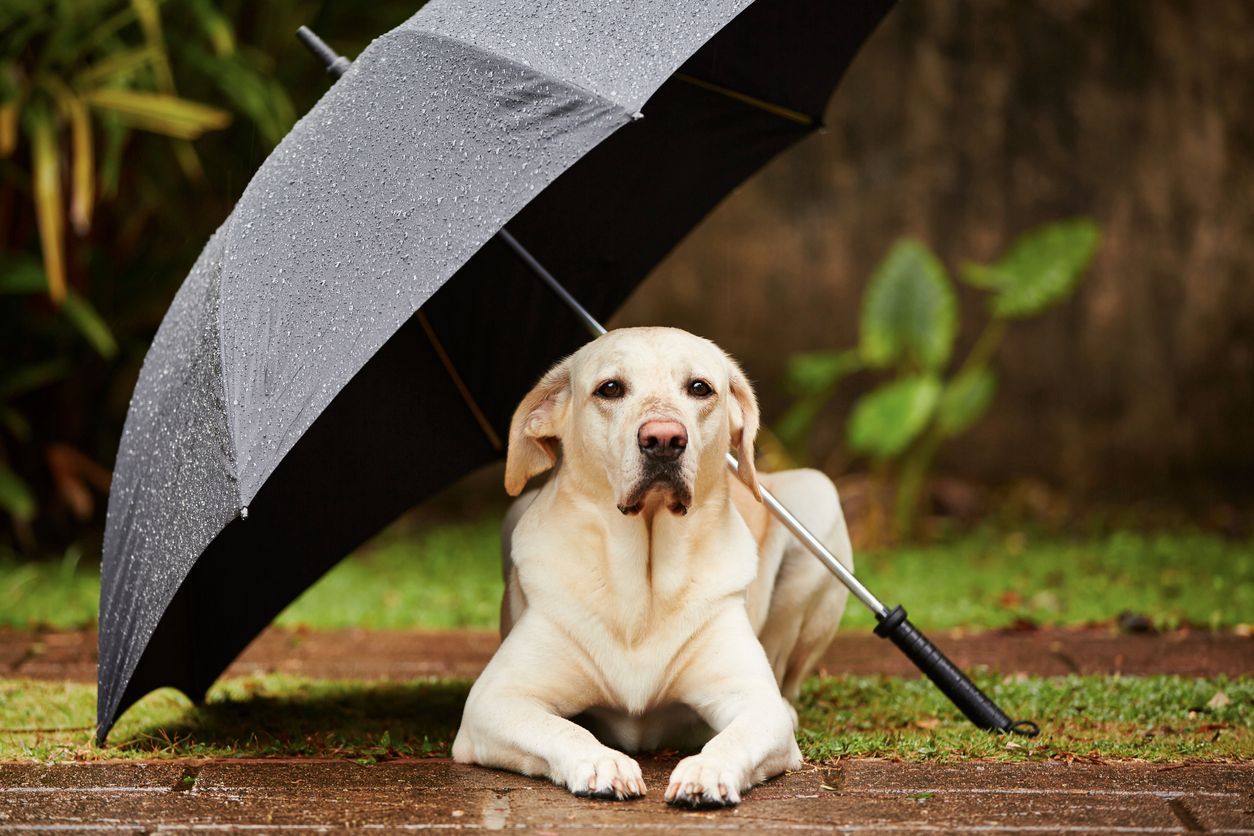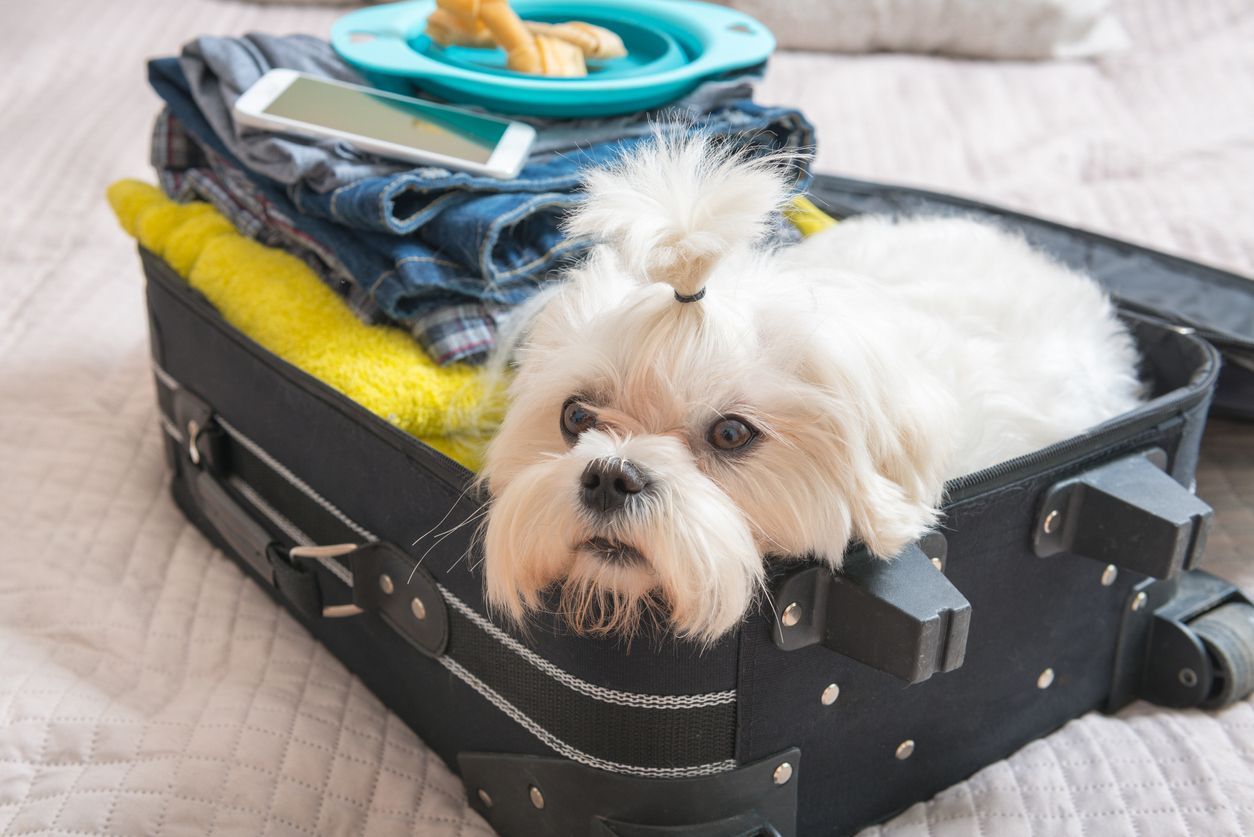6 things to know about summer cuts for dogs

To cut, or not to cut?
As a dog owner, you’ve probably wondered: ”Should I give my dog a summer haircut?”
Before you reach for your shears or call your groomer, Vetster vet Jo Myers, DVM, is here to answer your questions about summer coat care for your dog.
1. Is a summer haircut necessary for my dog or long-haired cat?
Contrary to popular belief, it’s not true that pets need to be specially trimmed for the summer. There’s a widespread myth that dogs (and some long-haired cats) should be given a summer trim, but that’s not actually the case. In fact, unnecessarily trimming or shaving your pet’s fur can interfere with their body’s natural ability to cool itself.
“Most pets don’t ever have to be trimmed, and many should never be trimmed,” Dr. Myers says. “The season and associated heat isn’t what drives a need for grooming.”
The important thing is to make sure that your pet’s coat is clean and free of mats, and that their skin is healthy – watch for crusty or oily buildup, bald spots, scabs or sores, and excessive itchiness.
If your pet has a dirty or matted coat, bathing and grooming is necessary, no matter what time of year.
2. How do dogs keep cool?
“Dogs only produce sweat on their foot pads, which means they can’t cool themselves off by sweating the same way we humans do,” advises Dr. Jo. “Instead, dogs rely on panting to get rid of body heat.”
For many dogs, a clean, tangle-free coat provides some insulation against the heat, even if the fur is long.
3. How can I recognize signs of overheating in my dog?
Thanks to dogs typically being more active than us, your dog may overheat before you do when you’re out in the heat together.
“Keep an eye out for signs of overheating, even though you might feel okay,” Dr. Myers cautions.
Watch for excessive panting, lying down and refusing to stand or walk, stretching out on the ground or cool floor, as well as more serious signs like vomiting and diarrhea.
If your dog is overweight, has a flat face (think: pugs), or has some type of underlying illness like heart disease or a respiratory ailment, they could have trouble breathing under any circumstances, so keep an extra careful watch.
4. How does coat care vary across different dog breeds?
“The amount of attention your pet’s coat will need depends on the length and texture of their fur, the presence or lack of an undercoat, other breed characteristics, and their lifestyle,” says Dr. Myers. “Many dogs don’t require a haircut, ever.”
Some breeds of dogs that grow very long coats – poodles, schnauzers, shih-tzus, Maltese, cocker spaniels, old English sheepdogs, and others – need regular trimming and shaving every other month or so, but it isn’t a seasonal thing.
“The regular grooming these breeds require is done to keep their coats manageable, not to keep them cool,” Dr. Myers reiterates.
Dog breeds with heavy undercoats – like Siberian huskies, Alaskan malamutes, chow-chows and retrievers – periodically ”blow” their coats, meaning the thick undercoat comes out by the handful. If the dead undercoat remains, thick mats can result, and this can contribute to overheating. If your dog has an undercoat, take care to comb or rake out this woolly fur when it sheds.
5. If I’m regularly grooming my dog, how far should I shave or cut down?
Try to avoid shaving all the way down to the skin or very close to it. This is when injuries like cuts and clipper burn can happen. Newly exposed skin is also at increased risk for sunburn.
If you’re trimming out matted sections of fur, it might appear necessary to go all the way down to the skin to remove the mat.
Dr. Myers has some tips for how to handle this:
- Use clippers, not scissors. Clippers allow you to get closer to the skin more safely.
- Avoid pulling on a clump of matted fur and trying to slide scissors between its base and your pet’s skin. This commonly results in a large hole being cut in the skin.
- Use clippers to shave off most of the matted fur. Avoid going all the way down to the skin. Once you’ve shaved off the matted fur, use a comb or your fingers to break apart the remaining matted fur to remove the rest.
6. Can I cut my pet's fur myself?
A professional groomer is usually the better way to go and sometimes, they even come to your house! Some pets submit to grooming more cheerfully than others, and some coat types and styles are more high-maintenance. Much like your human hairdresser, groomers will know the best tricks and techniques for grooming your individual pet, and they’ll have the necessary training to achieve the best outcomes.
If you feel confident and capable – and you have the right pet grooming tools and know how to use them – you could try DIY grooming. “Take care when using scissors to avoid accidental cuts or pokes, and be proactive about avoiding burns and abrasions when using clippers,” Dr. Myers says. If you’re motivated to learn what it takes to groom your pet yourself, start by checking out tutorial videos online. If your pet is the type to need regular grooming, you could even consider a grooming class to ensure you're getting the best possible results.
For more reliable pet care tips, check out our full Pet Connection library! And for convenient, virtual guidance, our team of experienced Vetster veterinarians are always ready and happy to help.




